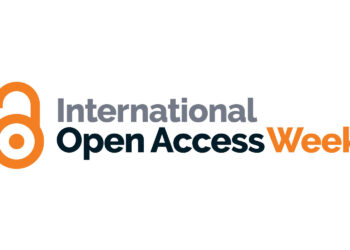
- Phrenology. Image via Wikipedia
Most of the journals in which I aspire to publish never ask me for a manuscript. They don’t need to. They receive thousands of voluntary contributions each year and turn most away.
On the other end are publishers who are starving for manuscripts. These publishers often contact me weekly for submissions.
In a period of two weeks, I received three email messages from Bentham Science, an open access (OA) publisher. One promised me a position on their “prestigious” editorial board, another asked me for a submission to a journal outside my field, and the third was seeking any submission remotely related to the social sciences. Some OA advocates have accused Bentham of spamming researchers.
Just how desperate was this publisher for a manuscript? Would they accept just any submission as long as I was willing to pay their $800 publication fee? I decided to embark on a little experiment.
First, I created a paper using SCIgen, software created by graduate students at MIT that generates a paper that is grammatically correct, although completely nonsensical. SCIgen even generates figures, tables, and a set of references. These papers look professional, until you read them.
Then I created a pseudonym, complete with a doctorate and affiliation (The Center for Research in Applied Phrenology). If the acronym didn’t reveal the farce right away, phrenology is the pseudoscience of reading personality traits from the lumps on one’s head.
In order to submit my manuscript, I had to agree to the Bentham Copyright and License Agreement. Everything looked fine, but what struck me as odd was the third condition:
On submission of the manuscript, the authors agree not to withdraw their manuscript at any stage prior to publication.
Well, this got me a little nervous. Suppose they accepted my nonsensical paper? Would I be unable to withdraw it and have to find $800 to pay the publisher? Obviously, the publisher does not want to invest time and energy into a paper, only to have it rejected without promised payment. This is a peril of relying on author-payments as a source of revenue. But it also calls into question whether scientific integrity can truly be separated from the business model for this publisher.
Luckily my paper didn’t get to the publication stage. A month after submission, I received a rejection letter with comments from two reviewers. One rejected the manuscript over a lack of technical contribution. The other seemed to get a little closer to the truth:
[…] It heaps together seemingly random theories and technologies without any clear motivation or explanation. The result as an incomprehensible paper on which I am not able to provide constructive comments.
I must admit that my “research” may be questioned on ethical grounds considering that I wasted the time of an editor and two reviewers. I took a little consolation in the fact that other respectable researchers have used this technique to test peer review. Many of you will remember the Sokal affair, in which a physicist tested his theory that a nonsensical article would be accepted by a postmodern humanities journal if it sounded good and flattered the editor.
That said, I completely expected to be found out, chastised, and blacklisted from ever publishing with Bentham Science again. The publisher, however, didn’t view it that way. In my rejection letter, the Assistant Manager wrote:
[…] We would be thankful if you could suggest a few names that are eminent in the relevant field and suitable for joining our publication as an Editorial Board Member. We will wait for your next manuscript.
Discussion
9 Thoughts on "Adventure in Open Access Publishing"
Phil,
The ethics issue on your “experiment” is actually quite complicated. For commentary, see Hilgartner, S. (1997). The Sokal Affair in Context. Science, Technology & Human Values, 22(4), 506-523.
It’s embarrassing enough to have sent it for peer review. A controlled study would involve sending similar nonsensical papers to similarly ranked journals at other major publishers to see how they handle them. I bet Medical Hypotheses would accept it…
That “no withdraw” clause is disturbing. What, even if the authors realise they’ve made a scientific error? Even if the journal fails to find reviewers?
Matt,
Thanks for your comment. Please remember that this was not a controlled experiment, and as Bruce eludes to above, the ethics of conducting such an experiment are questionable.
While one could learn a lot from an experiment with replication, it is unlikely that any Institutional Review Board would accept such a proposal today. I doubt they would even approve the classic Peters and Ceci study which involved only 12 manuscripts [1].
Yes, the “no withdraw” clause is disturbing when one considers the integrity of the published scientific record.
[1] Peters, D. P., & Ceci, S. J. 1982. Peer-review practices of psychological articles: the fate of accepted, published articles, submitted again. Behavioral and Brain Sciences 5: 187-195.
![Reblog this post [with Zemanta]](http://img.zemanta.com/reblog_e.png?x-id=3d4d3a55-aa4f-4cc9-9bfd-0f7eeb09dd33)


